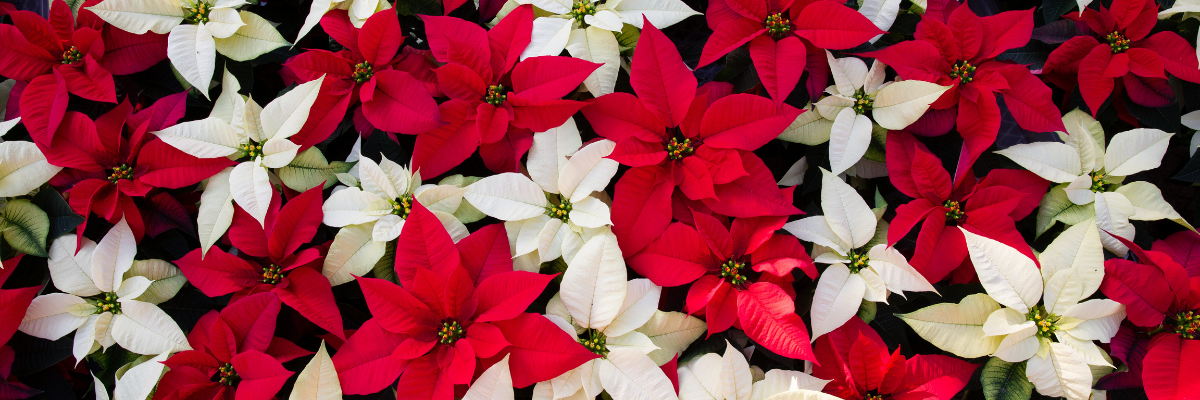Originally appeared National Garden Bureau
Ask The Experts about Poinsettias!
Few plants are as iconic as the poinsettia. The eye-catching blooms are a holiday tradition around the world. But the blooms aren’t a flower at all, they’re actually the leaves, or bracts, of the plant. Poinsettia are native to Central America, and in 1825, those stunning red leaves captured the attention of the United States ambassador to Mexico. A century later, the poinsettia was brought to market as a Christmas season plant in the U.S.
Today, red is still the most popular color, making up about 80% of all the poinsettias grown. Breeders around the world are developing new varieties that offer more color choices for holiday décor. Shoppers can choose from brilliant whites, deep burgundy hues, sparkling pinks, and a number of other specialty colors.
How To Choose Your Poinsettia
There are a few things to look for when choosing your poinsettia. “Make sure that the small yellow flowers in the center of the bracts (called cyathia – you can use that in your next cocktail party trivia!) are fresh and not turning brown,” says Karl Trellinger and Matt Blanchard, product managers with Syngenta Flowers. Poinsettias with withering or missing center flowers are past their prime.
Next, be sure both the leaves and the bracts look healthy. “The foliage can tell you a lot about the health of your poinsettia,” says Lisa Heredia, marketing and key accounts for Danziger North America. “Look at the lower foliage and make sure the leaves are green and healthy. Check to make sure the overall plant is well hydrated, you don’t want to see any droopy leaves.”
Don’t Overwater
Experts agree overwatering is the most common problem when it comes to poinsettia care. “In the typical home, poinsettia only needs water every 5-7 days,” says Rebecca Siemonsma, North American product manager for Dummen Orange. “Pick up the pot and if it feels light, then you want to water it.”
Remove the Decorative Pot before Watering your Poinsettia
The decorative pot covers most poinsettia varieties are packaged in can add to the problem. They can hold too much water, something poinsettias do not like. Experts recommend punching holes in the bottom of those covers and adding a saucer. Be sure the empty the saucer so the plant is not standing in excess water.
Bringing Natural Color Indoors with Poinsettias
Beautiful all on their own, poinsettia are also a natural for pairing with other holiday plants. “During the holiday season there is no better way to bring natural color into your décor,” says Delilah Onofrey, marketing director, Suntory Flowers. “Mix them in dish gardens with other greenery such as ferns, and other foliage plants. Pair them with other blooming plants such as cyclamen and orchids. Or, have several of the same color in decorative pots for a tablescape.”
“Pairing newer silver and variegated foliage plants always look beautiful with red poinsettias,” mentioned Gary Vollmer, product manager, Selecta One.
Poinsettia are NOT Poisonous
It is a common belief that poinsettia plants are poisonous. But the fact is, they’re NOT. An Ohio State University study, conducted in 1971, debunked this myth. Researchers found the plant is not toxic, even in high doses.
Poinsettias are NOT poisonous to Dogs and Cats
Most veterinary medicine websites state that poinsettias can be mildly toxic to dogs and cats and can cause vomiting, drooling, and, rarely, diarrhea. Symptoms are self-limiting and generally don’t require medical treatment, according to the Pet Poison Helpline. (Reference: Poinsettia’s Poisonous Reputation Persists, Despite Proof to the Contrary, CFAES at OSU)












